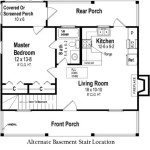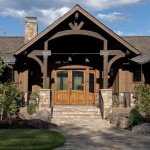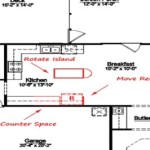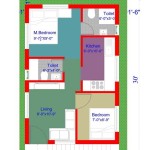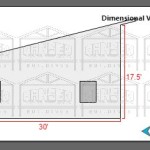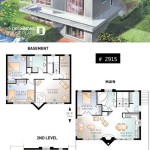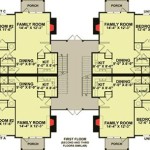House Plans for Sloped Lots in the Front Yard
Constructing a home on a sloped lot, particularly when the slope is in the front yard, presents both design challenges and unique opportunities. The traditional image of a flat, manicured lawn leading up to a standard front door often needs to be re-imagined. This article explores various house plan strategies and considerations for building on a sloped lot with the incline situated in the front yard, creating aesthetically pleasing and structurally sound residences.
Successfully integrating a home with a sloped front yard necessitates careful planning, incorporating elements of landscape architecture and innovative structural design. The goal is to minimize excavation, maximize natural light and views, and create a functional and appealing entry point. Understanding the principles of grading, drainage, and retaining walls is crucial to ensure the long-term stability and usability of the property.
Understanding the Challenges and Opportunities
Sloped lots in the front yard present distinct challenges. Accessibility becomes a primary concern. Traditional front steps might need to be extensive, and accessibility for individuals with mobility limitations requires careful consideration. Furthermore, erosion control and water management are paramount. The slope can accelerate water runoff, potentially leading to soil erosion and foundation damage if not properly addressed. The visibility of the home from the street might also be minimized depending on the severity of the slope.
However, these challenges also create opportunities. A sloped front yard can offer enhanced privacy, separating the home from street noise and visual intrusion. The elevation change can provide panoramic views, particularly if the house is oriented strategically. Creative landscaping solutions, such as terraced gardens and retaining walls, can add architectural interest and create unique outdoor living spaces. The slope can also be utilized for a walkout basement, adding significant living space to the home without increasing the footprint.
Before even considering house plans, a thorough site analysis is essential. This includes a topographical survey to determine the exact slope and contours of the land. Soil testing is also crucial to understand the soil composition and its stability. Understanding the existing vegetation, drainage patterns, and sun exposure will inform the design process and ensure that the house is well-integrated with the natural environment. Local building codes and zoning regulations should be reviewed to ensure compliance with setback requirements, height restrictions, and any specific regulations related to construction on sloped lots.
House Plan Strategies for Sloped Front Lots
Several architectural approaches can be employed when designing a house for a sloped front lot. The choice depends on the severity of the slope, the desired aesthetic, and the budget. Each strategy has its own set of advantages and disadvantages, and careful consideration should be given to the specific site conditions.
One common approach is to build a split-level or split-entry home. This design effectively utilizes the slope by creating two distinct levels separated by a short flight of stairs. The lower level is often partially buried into the slope, providing a walkout basement or garage access. The upper level contains the main living areas and bedrooms. This design minimizes excavation and can be a cost-effective solution for moderately sloped lots.
Another approach is to build a raised foundation or pier and beam foundation. This elevates the house above the slope, creating a level platform for the main living areas. The space beneath the house can be used for parking, storage, or even additional living space. This strategy is particularly well-suited for steep slopes, as it minimizes excavation and allows for unobstructed views. However, it can be more expensive than a traditional foundation due to the additional structural support required.
A daylight basement design is another popular option. This involves excavating into the slope to create a basement that is partially above ground on one side. Large windows and doors are incorporated into the exposed wall, allowing natural light to flood the basement and creating a usable living space. This design maximizes the use of the slope and can add significant square footage to the home. However, proper drainage and waterproofing are essential to prevent moisture problems in the basement.
Terracing the landscape is a valuable design strategy that is often paired with any of the above-mentioned house plan strategies. This involves creating a series of level platforms connected by retaining walls or gently sloping steps. Terracing can be used to create gardens, patios, and walkways, making the front yard more usable and visually appealing. It also helps to control erosion and manage water runoff. The retaining walls can be constructed from a variety of materials, such as stone, brick, or concrete, depending on the desired aesthetic.
In recent years, there has been a growing interest in cantilevered designs for sloped lots. This involves extending a portion of the house over the slope, creating a dramatic and visually striking effect. Cantilevered structures require careful engineering and specialized construction techniques, but they can offer unparalleled views and a unique architectural statement.
Key Considerations for Sloped Front Lot House Plans
Several key factors need to be considered when selecting or developing house plans for sloped front lots. These considerations extend beyond the basic structural design and address aspects such as accessibility, landscaping, and environmental impact.
Accessibility is one of the most important considerations. The design should provide a safe and convenient entry point for all residents and visitors, including those with mobility limitations. Ramps, gently sloping walkways, and strategically placed handrails can make the home more accessible. Elevators or lifts can also be incorporated into the design for multi-story homes.
Landscaping plays a crucial role in integrating the house with the sloped front yard. The landscaping should complement the architectural style of the house and provide visual interest throughout the year. Native plants are often a good choice, as they are well-adapted to the local climate and require less maintenance. Drought-tolerant plants can also help to conserve water. Terraced gardens, rock gardens, and water features can add beauty and functionality to the landscape.
Drainage is a critical aspect of building on a sloped lot. The design should incorporate a comprehensive drainage system to prevent water from pooling around the foundation and causing damage. This may include French drains, swales, and downspout extensions. Proper grading is also essential to ensure that water flows away from the house. A landscape architect can help to design a drainage system that is both functional and aesthetically pleasing.
Retaining walls are often necessary to stabilize slopes and create usable outdoor spaces. The design of the retaining walls should be carefully considered, taking into account the soil conditions, the height of the wall, and the desired aesthetic. Retaining walls can be constructed from a variety of materials, such as stone, brick, or concrete. Gabion walls, which are made from wire cages filled with rocks, are another option that is often used for erosion control on steep slopes.
The orientation of the house on the lot can significantly impact its energy efficiency and comfort. The design should take into account the sun's path throughout the year, and the house should be oriented to maximize solar gain in the winter and minimize it in the summer. Large windows should be placed on the south side of the house to capture sunlight in the winter, while shading devices such as overhangs and awnings can be used to block sunlight in the summer. Proper insulation and ventilation are also essential for energy efficiency.
The selection of building materials should be carefully considered, taking into account their durability, aesthetics, and environmental impact. Sustainable building materials, such as reclaimed wood and recycled concrete, can help to reduce the environmental footprint of the house. Durable materials that are resistant to moisture and pests are essential for long-term performance.
The budget is a key consideration in any construction project, and it is important to develop a realistic budget that takes into account the additional costs associated with building on a sloped lot. Excavation, retaining walls, and specialized foundation systems can all add to the cost of the project. It is important to obtain multiple bids from contractors and to carefully review the scope of work before signing a contract.
Integrating Design Elements for Aesthetic Appeal
The successful integration of a house plan with a sloped front yard involves careful consideration of design elements that enhance the aesthetic appeal of the property. These elements can range from the architectural style of the house to the landscaping choices and the use of outdoor lighting.
The architectural style of the house should be appropriate for the site conditions and the surrounding neighborhood. A contemporary design with clean lines and large windows can complement a sloped lot, while a more traditional design with a gabled roof and a covered porch can create a sense of warmth and welcome. The use of natural materials, such as wood and stone, can help to blend the house with the landscape.
The landscaping should be designed to create a cohesive and visually appealing environment. Terraced gardens, rock gardens, and water features can add interest and texture to the landscape. The use of native plants can help to create a sense of place and reduce the need for irrigation. Outdoor lighting can be used to highlight architectural features, illuminate pathways, and create a welcoming ambiance.
The entry point to the house should be clearly defined and inviting. A well-designed walkway, a covered porch, and a welcoming front door can create a positive first impression. The use of landscaping to frame the entry can further enhance its appeal. The entry should also be accessible to all residents and visitors, including those with mobility limitations.
Outdoor living spaces, such as patios and decks, can be incorporated into the design to take advantage of the views and create opportunities for relaxation and entertainment. A patio can be built on a level terrace, while a deck can be cantilevered over the slope to provide unobstructed views. Outdoor kitchens and fireplaces can add to the enjoyment of these spaces.
Color and texture can be used to create visual interest and enhance the aesthetic appeal of the house. The choice of exterior colors should complement the surrounding landscape. The use of different textures, such as wood siding, stone veneer, and brick accents, can add depth and dimension to the facade. Interior colors should be chosen to create a comfortable and inviting atmosphere.
Windows and doors should be strategically placed to maximize natural light and views. Large windows can be used to capture sunlight in the winter, while shading devices can be used to block sunlight in the summer. Doors should be chosen to provide easy access to outdoor living spaces. Low-emissivity (Low-E) glass can help to reduce heat transfer and improve energy efficiency.
By carefully considering these design elements, it is possible to create a house that is both functional and aesthetically pleasing, even on a challenging sloped lot.

Colombo Rustic Mountain Home Plan 088d 0102 Search House Plans And More

Hillside Modern

2 Bedroom House Plans Truoba For Comfortable Living

Yellowstone House Plan Best Ing Rustic Home Design Mf 2425

How To Design A Great Garden On Sloped Lot

Craftsman House Plan With Basement Option 2297

Home Lot Exposures Lower Level Design Options Demlang Builders

Medway 5883 4 Bedrooms And Baths The House Designers

Gold Coast Sloping Sites And Custom Design Inh Integrity New Homes
19 Front Yard Landscaping Ideas That Boost Curb Appeal

